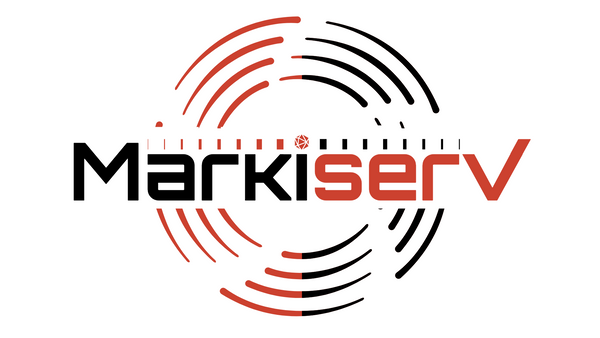
Print Design Introduction
Imagine walking into a bookstore and being drawn to a beautifully designed book cover. Or receiving a meticulously crafted business card that leaves a lasting impression. These are the moments where print design shines, blending art and science to create tangible experiences that resonate with people. In this guide, we’ll explore the world of print design, uncovering its secrets and showcasing how you can master this craft.
What is Print Design?
Print design is the process of creating visual content for physical media. Unlike digital design, which is meant for screens, print design focuses on items you can touch and feel, such as brochures, posters, packaging, and more. It’s about making a visual impact in the real world.
The Power of Print Design
Print design holds a unique power in the digital age. Here’s why it’s still incredibly relevant:
- Tangible Connection: Print materials create a physical connection with the audience, making the experience more memorable.
- Brand Identity: Consistent and well-crafted print design reinforces brand identity and helps build trust.
- Versatility: From business cards to billboards, print design can be applied to a wide range of products, each serving a different purpose.
Crafting Print Design: A Step-by-Step Guide
Step 1: Understand Your Purpose
Every print project starts with a clear purpose. Whether you’re designing a flyer for an event or packaging for a product, knowing your goal is crucial. Ask yourself:
What message do I want to convey?
Who is my target audience?
What action do I want the audience to take?
Step 2: Gather Inspiration
Look around you. Inspiration for print design can come from anywhere – nature, architecture, fashion, or even a walk in the park. Collect examples of designs that catch your eye and analyze what makes them effective. Websites like Pinterest and Behance are great places to start.
Step 3: Sketch Your Ideas
Before diving into design software, sketch your ideas on paper. This helps you explore different layouts and concepts without getting bogged down by technical details. Think about the placement of text, images, and other elements.
Step 4: Choose the Right Tools
Once you have a clear vision, it’s time to bring your design to life using digital tools. Here are some popular options:
Adobe InDesign: Ideal for creating layouts and multi-page documents.
Adobe Illustrator: Perfect for vector graphics and illustrations.
Adobe Photoshop: Great for photo editing and raster graphics.
Step 5: Focus on Key Elements
Typography: Choose fonts that reflect your brand’s personality. Use hierarchy to guide the reader’s eye and ensure readability.
Color: Understand color theory and use it to evoke emotions. Stick to your brand colors for consistency.
Imagery: Use high-quality images that are relevant to your message. Ensure they are high resolution for print.
Layout and Composition: Balance your design by distributing elements evenly. Use alignment and white space to create a clean look.
Step 6: Print Specifications
Print design has specific technical requirements. Here are some key considerations:
Resolution: Use at least 300 DPI for high-quality prints.
Bleed: Include a bleed area to account for trimming errors.
Color Mode: Use CMYK color mode, as it accurately represents how colors will appear in print.
Step 7: Proof and Test
Before sending your design to print, proofread all text and check for errors. Print a test copy to see how it looks in physical form. This step is crucial to ensure the final product meets your expectations.
Real-World Examples of Print Design
- Business Cards: A well-designed business card can leave a lasting impression. Use high-quality paper and consider unique finishes like embossing or foil stamping.
- Brochures: Brochures are great for providing detailed information. Use a clean layout, engaging images, and clear headings to guide the reader.
- Posters: Posters need to grab attention quickly. Use bold colors, striking images, and concise text to make an impact.
- Packaging: Packaging design is crucial for product branding. Ensure it’s functional, visually appealing, and reflective of the brand’s identity.
Avoiding Common Mistakes
Even experienced designers can make mistakes. Here are some pitfalls to avoid:
- Overcrowding: Less is more. Avoid cramming too much information into your design.
- Ignoring Print Specs: Always check resolution, bleed, and color mode to avoid poor-quality prints.
- Inconsistent Branding: Ensure all printed materials align with your brand’s identity.
- Skipping Proofing: Always proofread and test your design before finalizing it.

Conclusion
Print design is a blend of creativity and technical skill. By understanding the principles and following best practices, you can create designs that not only look great but also effectively communicate your message. Whether you’re designing a simple flyer or an elaborate packaging, remember that every detail matters. Embrace the tactile nature of print design and let your creativity shine.
Resources to Learn More:
Still curious? Checkout these helpful links below that can help you really deep dive into designing print materials. After reading through this page, and using these resources below, you should be in good shape in building your understanding of print design techniques:
- What is Print Design? Everything You Should Know | All Time Design: This article provides a comprehensive overview of print design, including its benefits, types, and key considerations.
- Guide to Print Design: Everything You Need to Know | Inkbot Design: Inkbot Design offers an in-depth guide covering the fundamentals of print design, essential principles, and practical tips for creating effective printed materials.
- What is Print Design? (Definition, Types, Process) | Media Caterer: This resource explains the basics of print design, its various applications, and the process involved in creating print-ready designs.
- What Is Print Design? Key Insights for 2024 | DesignRush: DesignRush provides key insights into print design, highlighting its importance, trends, and how it differs from digital design.
